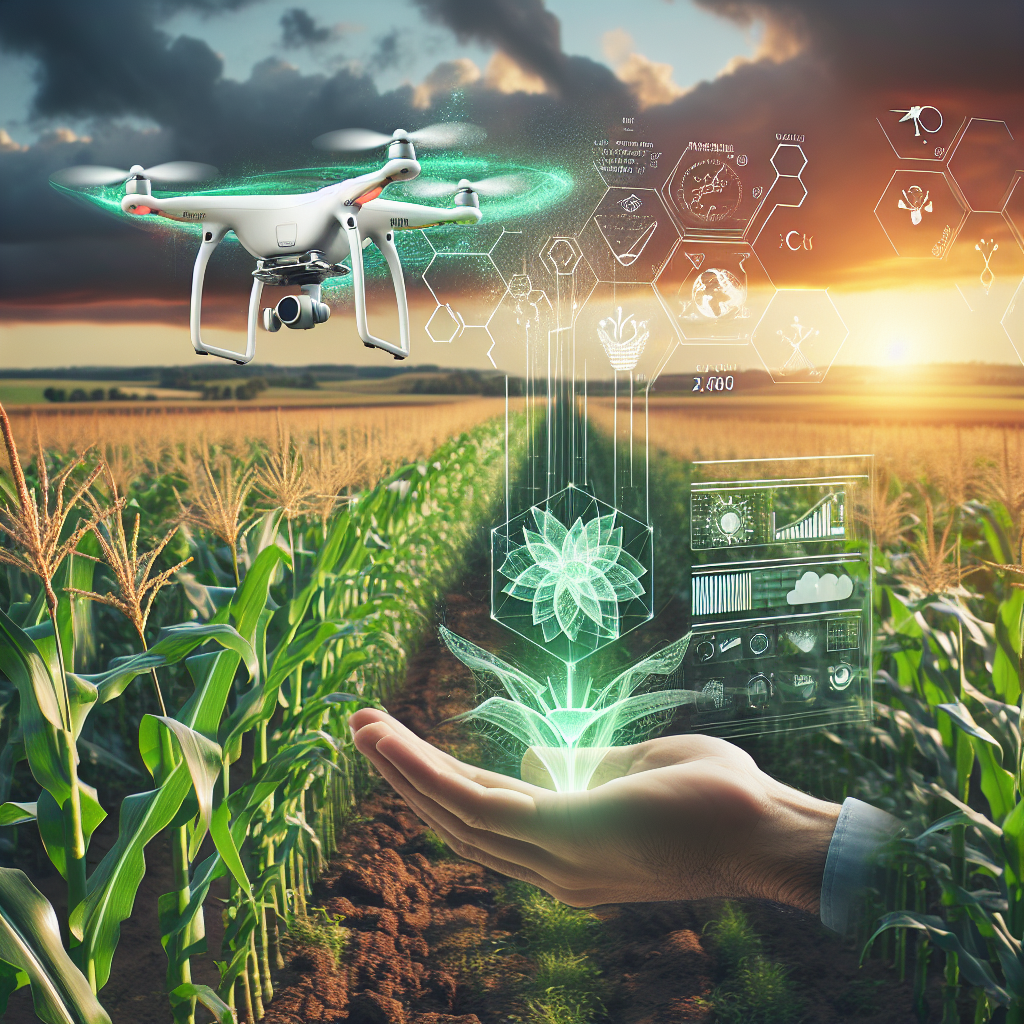Agriculture is a risky business. Farmers are constantly at the mercy of unpredictable weather patterns, pests, diseases, and market fluctuations. Crop insurance is a vital tool that helps farmers mitigate these risks and provides them with financial protection in the event of crop failure. However, the traditional methods of assessing crop insurance risks can be time-consuming, costly, and prone to human error.
Artificial intelligence (AI) has the potential to revolutionize the way crop insurance risks are assessed. By harnessing the power of AI, insurers can analyze vast amounts of data quickly and accurately, allowing them to make more informed decisions about which policies to offer and at what premiums. This not only benefits insurers by reducing their exposure to risk but also benefits farmers by providing them with more affordable and tailored insurance options.
One of the key advantages of using AI for crop insurance risk assessment is its ability to process and analyze large datasets. AI algorithms can crunch numbers much faster than humans, allowing insurers to assess risk factors such as weather patterns, soil quality, crop yield projections, and historical data in a fraction of the time it would take a human to do so. This rapid analysis allows insurers to make more timely decisions about which policies to offer and how to price them.
Another advantage of using AI for crop insurance risk assessment is its ability to identify patterns and trends that may not be obvious to human analysts. By analyzing data from multiple sources, AI algorithms can detect correlations and relationships that humans may overlook. For example, AI can identify that certain weather patterns are correlated with higher rates of crop failure in a specific region, allowing insurers to adjust their policies accordingly.
AI can also be used to create more accurate risk profiles for individual farmers. By analyzing data on a farmer’s past crop yields, farming practices, and other relevant factors, AI algorithms can generate a personalized risk profile that takes into account the unique characteristics of each farm. This allows insurers to offer more tailored insurance options to farmers, rather than relying on generic risk assessments that may not accurately reflect an individual farmer’s situation.
In addition to improving the accuracy and efficiency of crop insurance risk assessment, AI can also help insurers streamline their operations and reduce costs. By automating the process of data analysis and risk assessment, insurers can free up human resources to focus on other tasks, such as customer service or claims processing. This not only saves time and money but also improves the overall customer experience by reducing the time it takes to get a quote or file a claim.
Despite the many benefits of using AI for crop insurance risk assessment, there are also some challenges and limitations to consider. For example, AI algorithms are only as good as the data they are trained on. If the data used to train an AI model is biased or incomplete, the model may produce inaccurate results. Insurers must therefore ensure that the data they use to train their AI algorithms is accurate, up-to-date, and representative of the population they are trying to assess.
Another challenge is the potential for AI to perpetuate existing inequalities. If AI algorithms are trained on data that reflects historical biases or discrimination, they may produce results that are unfair or discriminatory. Insurers must be vigilant in monitoring their AI algorithms for bias and taking steps to mitigate any potential harm.
Despite these challenges, the use of AI for crop insurance risk assessment holds great promise for the agriculture industry. By leveraging the power of AI to analyze data quickly and accurately, insurers can make more informed decisions about which policies to offer and at what premiums. This benefits both insurers and farmers by reducing risk exposure and providing farmers with more affordable and tailored insurance options.
In conclusion, the use of AI for crop insurance risk assessment has the potential to revolutionize the way insurers assess risk and offer policies to farmers. By harnessing the power of AI to analyze vast amounts of data quickly and accurately, insurers can make more informed decisions about which policies to offer and at what premiums. This benefits both insurers and farmers by reducing risk exposure and providing farmers with more affordable and tailored insurance options.
FAQs:
Q: How does AI improve crop insurance risk assessment?
A: AI improves crop insurance risk assessment by analyzing vast amounts of data quickly and accurately, allowing insurers to make more informed decisions about which policies to offer and at what premiums. AI can also identify patterns and trends that may not be obvious to human analysts, leading to more accurate risk profiles for individual farmers.
Q: What are the potential challenges of using AI for crop insurance risk assessment?
A: Some potential challenges of using AI for crop insurance risk assessment include bias in the training data, the potential for AI to perpetuate existing inequalities, and the need for insurers to monitor their AI algorithms for bias and discrimination. Insurers must ensure that the data used to train their AI algorithms is accurate, up-to-date, and representative of the population they are trying to assess.
Q: How can insurers ensure that their AI algorithms are fair and unbiased?
A: Insurers can ensure that their AI algorithms are fair and unbiased by monitoring them for bias and discrimination, auditing the data used to train the algorithms for accuracy and representativeness, and taking steps to mitigate any potential harm caused by biased algorithms. It is also important for insurers to involve diverse stakeholders in the development and testing of AI algorithms to ensure that they are fair and equitable.

